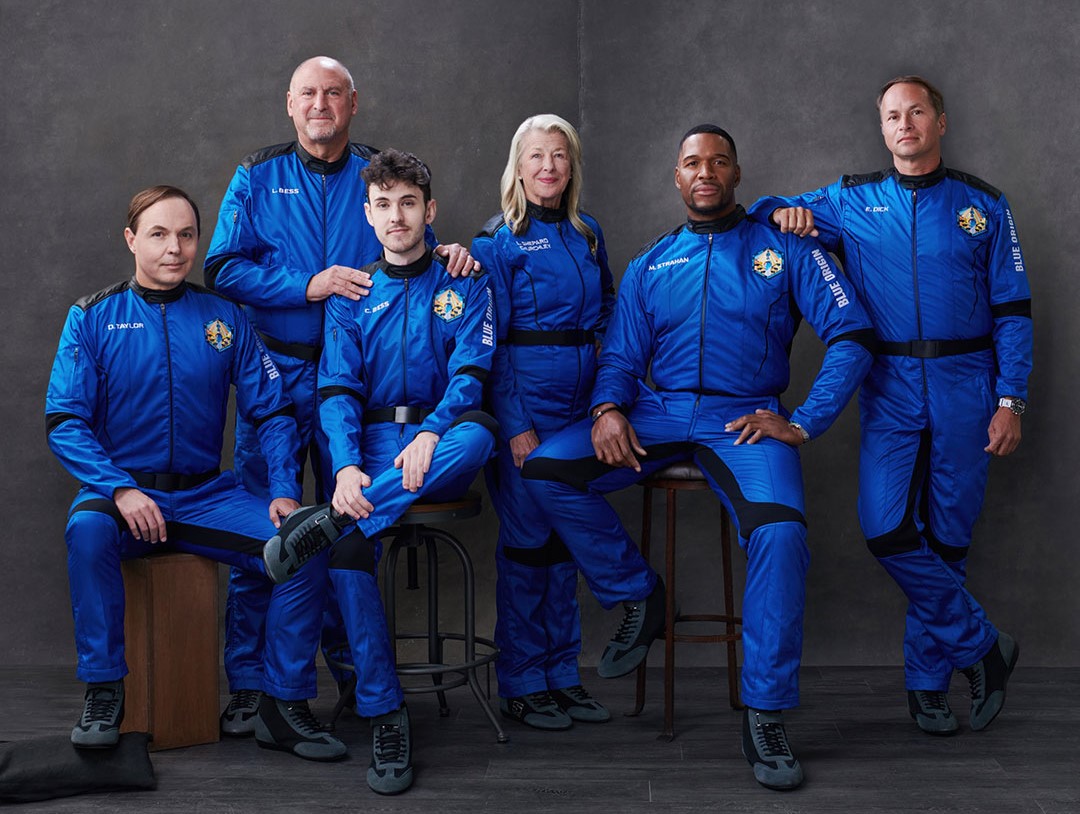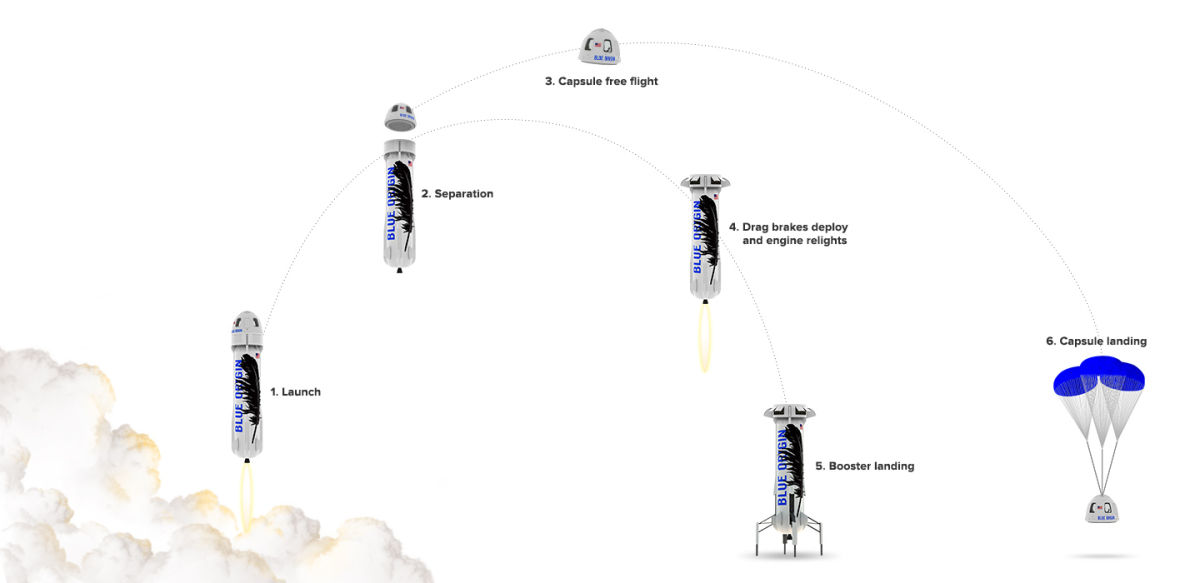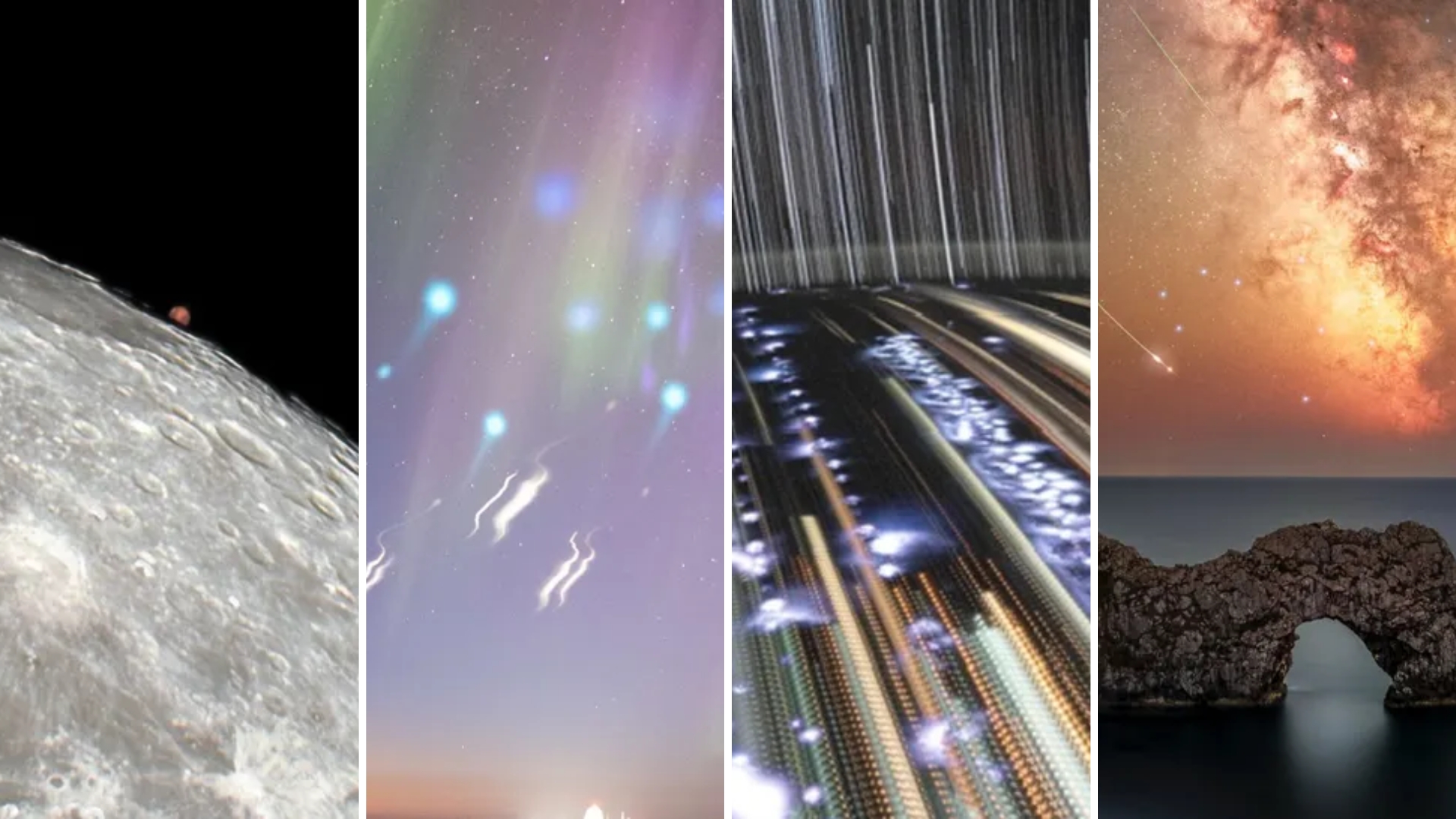Blue Origin's New Shepard launch with GMA anchor Michael Strahan: When to watch and what to know
The launch is set for Saturday, Dec. 11 at 9:45 a.m. EDT (1445 GMT).
Editor's note: Blue Origin has successfully launched Michael Strahan and 5 others to space and back on the New Shepard NS-19 space tourist flight. Recovery of the crew is now under way. Live updates
Blue Origin's next crewed space mission will see "Good Morning America" anchor Michael Strahan fly to space with five other people.
On Saturday (Dec. 11), Blue Origin's third crewed flight on its New Shepard spacecraft will include Strahan, NASA astronaut Alan Shepard's daughter Laura Shepard Churchley, and four paying passengers: Dylan Taylor, Evan Dick and parent-child pair Lane and Cameron Bess.
Live updates: Michael Strahan's Blue Origin Launch on New Shepard
The NS-19 mission's launch time for New Shepard is set for 8:45 a.m. local time (9:45 a.m. EDT; 1345 GMT) from the company's Launch Site One near Van Horn, Texas. A live webcast of the launch will begin at 8:15 a.m. EST (1315 GMT).
Here's everything you need to know about the flight.
What time is Blue Origin's launch and can I watch?
The launch of New Shepard's third crewed flight will be broadcast Saturday (Dec. 11) with a likely start time of approximately 8:15 a.m. EDT (1215 GMT) at BlueOrigin.com and here at Space.com, if possible. Liftoff is expected at 9:45 a.m. EDT (1345 GMT) but could change depending on weather or technical matters.
Breaking space news, the latest updates on rocket launches, skywatching events and more!
New Shepard flights normally last 11 minutes and typically, at least based on the crewed flights to date, a live broadcast with the astronauts will likely be available at BlueOrigin.com. If that happens, Blue Origin will likely stream it online and Space.com will simulcast it if possible. The company also plans mission updates through @BlueOrigin on Twitter.
New Shepard flights bring the spacecraft well above the 62-mile (100 kilometers) Kármán line seen as the boundary of space by international authorities. (Competitor Virgin Galactic does not travel that high, and the two companies have squabbled about this matter.) The New Shepard rocket will land at the launch site autonomously and the crew capsule, after flying to space and separating from the booster, will descend minutes later under a parachute.
Who is Blue Origin launching on New Shepard?
New Shepard's third crewed will carry six passengers, but no pilot as the space capsule is an automated system. The crew will include:
Michael Strahan, 50, co-anchor of ABC's Good Morning America," host of "$100,000 Pyramid" and analyst of "Fox NFL Sunday" during the football season. Strahan will be the second retired NFL football player to launch into space, having been a defensive end for the New York Giants for 15 seasons. (The first, former NASA astronaut Leland Melvin, spent 23 days in space across two space shuttle missions.) Strahan, who at 6 feet, 5 inches tall (196 cm), will become the tallest person in history to reach space.
Laura Shepard Churchley, 74, the eldest daughter of NASA astronaut Alan Shepard, who flew on NASA's first-ever human spaceflight mission in 1961, and the moon landing mission Apollo 14 in 1970. Churchley is the chair of the Astronaut Scholarship Foundation Board of Trustees at NASA's Kennedy Space Center in Florida. She also is an honorary consultant to the Christa McAuliffe Planetarium in Concord, New Hampshire and a board member (past and present) on various space organizations.
Dylan Taylor, 51, chairman and CEO of the space exploration firm Voyager Space, founder of the nonprofit Space for Humanity, and co-founding patron of the Commercial Spaceflight Federation. Blue Origin says Dylan is an early-stage investor in more than 50 young businesses and is thought to be the most active private space investor worldwide.
Evan Dick, age not disclosed, an engineer and investor who is a volunteer pilot for Starfighters Aerospace. His past work includes quantitative finance at D.E. Shaw, statistical arbitrage at Highbridge Capital Management, and building a simulator for the Telesat 7 communication satellite at G.E. Astro Space.
Lane Bess, age not disclosed, principal and founder of a technology-focused venture fund called Bess Ventures and Advisory. He founded and helped grow Zscaler and Palo Alto Networks, and currently serves as a trustee at Carnegie Mellon University.
Cameron Bess, age not disclosed, is a child of Lane. They stream a variety of content on Twitch under the alias MeepsKitten. Their goal, according to Blue Origin, is to reach audiences who are "often misunderstood." Bess added in their biography: "Cameron identifies as pansexual, and is proud to represent marginalized communities, and hopes their journey can inspire others." Bess is the third known LGBTQ+ spaceflyer after NASA's Sally Ride (the first American woman in space) and Anne McClain, who is part of the "Artemis team" of astronauts expected to fly moon missions.
What is Blue Origin's mission for the flight?
New Shepard has performed 18 flights prior this one; the current mission is called NS-19. Most of those previous flights had no crew members on board, being uncrewed tests or payload research flights.
The most recent flight was on Oct. 13, when New Shepard sent a crew of four into space, starring "Star Trek" captain William Shatner. Prior to that, Blue Origin's first human spaceflight on July 20 included four people, such as founder Jeff Bezos and Mercury 13 aviator Wally Funk.
New Shepard is named after Mercury astronaut (and Laura Shepard Churchley's father) Alan Shepard, the first American to reach space in 1961. The rocket is about 60 feet (18 meters) tall and passengers experience "weightlessness" in suborbital space for about three minutes. Blue Origin has not yet disclosed seat pricing to the public; competitor Virgin Galactic now sells seats for $450,000 a piece.
Infographic: How Blue Origin's New Shepard rocket works
Regardless of the cost, the spaceflight lasts about 11 minutes from launch to landing. No pilots are included onboard because the rocket can fly autonomously to the launch pad; it is aerodynamically stabilized using a ring and wedge fins. As for the crew, they descend back to Earth under a parachute a few minutes after the rocket lands.
Blue Origin cites the spacecraft's "big, beautiful windows" and its flight altitude as marketing tools to attract the super-rich for future flights, although the company is also looking for customers willing to pay for experiments in microgravity.
What will Blue Origin astronauts experience?
Unlike her father, Shepard Churchley likely only received 14 hours of training over a few days, to learn basic flight and emergency procedures. Otherwise, the spacecraft flies autonomously. "It looks like the same thing that Daddy did, just about five minutes shorter," Churchley said in an interview with collectSPACE.com.
Crews also typically do not wear spacesuits, instead wearing blue jumpsuits with Blue Origin apparel. This is unlike what professional astronauts do, although the upside is within the capsule, the crew can easily move around during the weightless phase and make comments about the view.
Blue Origin's first auction in 2021 featured a terms and conditions document for flight crews asking spaceflyers to meet requirements such as dressing themselves in flight suits and ascending the launch tower (seven flights of stairs) in less than 90 seconds.
Flying on New Shepard is a high-risk activity, even though Blue Origin talks about aspects like the view, the autonomous experience and the shirtsleeve environment. Passengers face risks such as cabin depressurization or dealing with multiple forces of gravity (G-loads) during launch and landing. In case of emergency, the crew does know how to unstrap themselves in 15 seconds.
On Sept. 30, a group of 21 Blue Origin employees (nearly all anonymous) wrote an essay severely criticizing the company's culture and safety practices, alleging the company was rushing to launch faster than was safely feasible to start having paying passengers sooner.
That said, New Shepard has flown 18 times since 2015 and the company has recovered both the capsule and booster on all but one occasion. That happened due to a hydraulics issue on the first flight, NS1, which prevented the booster from landing as planned.
Blue Origin uses its RSS First Step (RSS is short for Reusable Space Ship) for crewed flights. A different New Shepard capsule, called RSS H.G. Wells, is used for uncrewed science flights.
Where does Blue Origin launch New Shepard from?
Blue Origin launches from a remote area of the West Texas desert, roughly 25 miles from the town of Van Horn. The facility is called Launch Site One and is highly restricted during launches; even nearby State Highway 54 typically does not allow the public, and only select media can go on site.
You can view the facilities in a short tour video Blue Origin previously released. If you get the chance to pay for a flight, though, customers can visit the spacecraft and learn about the nearby support facilities, according to the video.
When could I launch to space with Blue Origin?
Blue Origin has a spot on its website to get in line for future flights, but its schedule and pricing is not yet available. The company likely has a backlog of high-profile passengers to run through first.
Virgin Galactic flights retail now for $450,000 apiece and stratospheric balloon provider World View (which does not reach space but does allow passengers to see the Earth's curvature) plans to start flying customers for $50,000 a seat in 2024, if the schedule holds.
Follow Elizabeth Howell on Twitter @howellspace. Follow us on Twitter @Spacedotcom and on Facebook.

Elizabeth Howell (she/her), Ph.D., was a staff writer in the spaceflight channel between 2022 and 2024 specializing in Canadian space news. She was contributing writer for Space.com for 10 years from 2012 to 2024. Elizabeth's reporting includes multiple exclusives with the White House, leading world coverage about a lost-and-found space tomato on the International Space Station, witnessing five human spaceflight launches on two continents, flying parabolic, working inside a spacesuit, and participating in a simulated Mars mission. Her latest book, "Why Am I Taller?" (ECW Press, 2022) is co-written with astronaut Dave Williams.




